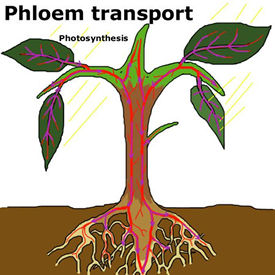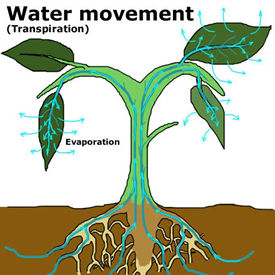| Life and Living: | |
| How plants and animals get the energy to stay alive | |
Energy is required by all living things to stay alive. Living things require energy to carry out their many functions such as moving, responding to changes in the environment, reproducing, growing, eliminating wastes, obtaining nutrients and passing them on to all the cells in the living thing. Energy is released in all living cells by the process of respiration. In respiration, carbohydrates (complex sugars) are combined with oxygen from the air to release energy and produce carbon dioxide and water.
Respiration requires a source of carbohydrates. In animals, these carbohydrates are obtained by eating plants and other animals. Animals are called heterotrophs, which means they use other plants and/or animals as their source of energy.
Unlike animals, plants make their own carbohydrates using the process of photosynthesis. With photosynthesis, plants combine light energy from the Sun, carbon dioxide gas from air and water to produce carbohydrates and oxygen. Plants are called autotrophs as the make their own source of energy. Plants capture energy from the Sun and using photosynthesis, then release this energy by respiration for their own use.
Note:- In the diagrams below, photosynthesis and respiration are chemically the reverse of each other.
PHOTOSYNTHESIS
only takes place in plants in daylight.
water + carbon dioxide + energy ![]() carbohydrate + oxygen
carbohydrate + oxygen
Photosynthesis requires light energy and chlorophyll (the green pigment in leaves) to make the reaction occur. Chlorophyll is an enzyme. Enzymes are substances which help biological chemical reactions occur.
This illustration shows the process of Phloem transport. This process by which carbohydrates produced by photosynthesis are moved and stored in the plant for later use.
RESPIRATION takes place in all living cells, plant and animal cells, all of the time.carbohydrate + oxygen
Unlike photosynthesis, respiration occurs all the time in both plants and animals. At the cellular level carbohydrates are consumed as food and combined with oxygen from the air. Waste water and carbon dioxide are then expelled from the living thing. In plants this is done through transpiration.
For a plant to grow it must photosynthesise more than it respires or it would not have the carbohydrates to turn into starch and cellulose, the structural material of plants.
Links:
![]() Animal,
plant or fungi? - A simplified classification system
Animal,
plant or fungi? - A simplified classification system ![]() Plant
systems A: Transport and support
Plant
systems A: Transport and support
![]() Plant
system B: Photosynthesis, nutrition and respiration
Plant
system B: Photosynthesis, nutrition and respiration ![]() Food:
The chemicals of life
Food:
The chemicals of life
![]() Systems,
transport and exchange
Systems,
transport and exchange
| Copyright owned by the State of Victoria (Department of Education and Early Childhood Development). Used with Permission. |

